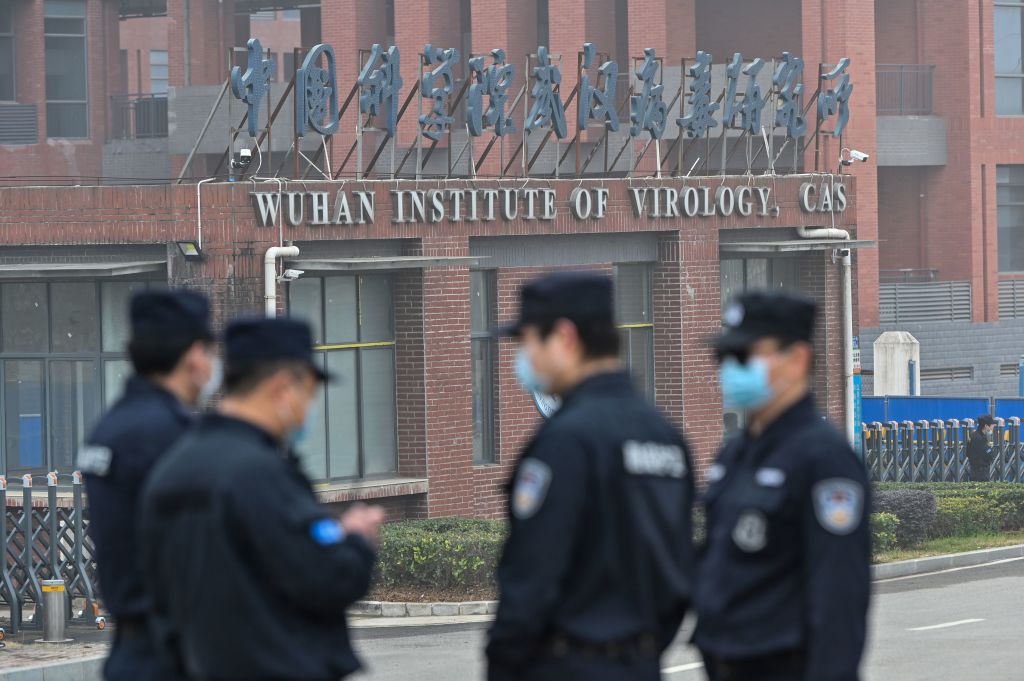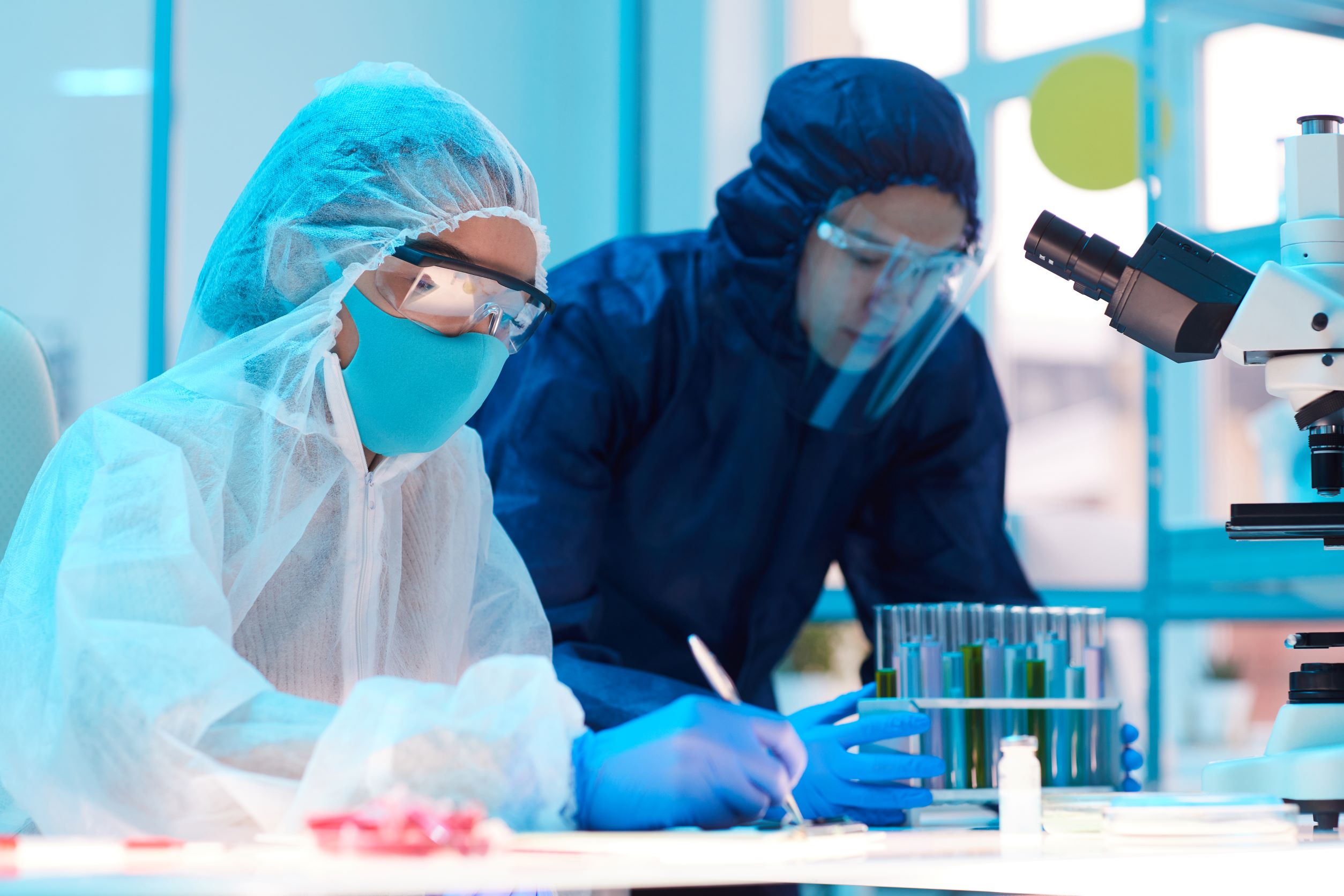7 facts about the origin of the novel coronavirus
The source of the virus has been hotly debated.

- The virus was first reported in Wuhan, China.
- It's closely related to bat coronaviruses, but the animal source is unknown.
- Markets in Wuhan sold animals known to harbor coronaviruses.
- A specialized lab in Wuhan studied coronaviruses.
- WHO says natural spillover is the most likely explanation.
- A lab-leak theory remains viable.
- A lack of transparency has hindered investigations.
Despite vast amounts of research on the novel coronavirus, known as SARS-CoV-2, little is known about its origins. Indeed, the source of the virus has been hotly debated, with some theories pointing toward a natural origin and others claiming the virus accidentally leaked from a lab.
Here's what we know about the origins of SARS-CoV-2.
The virus was first reported in Wuhan, China.

In late December 2019, health officials issued the first warnings about a cluster of pneumonia cases in Wuhan, China. Those cases would turn out to be the world's first reported cases of COVID-19. By early January 2020, researchers had identified a novel coronavirus behind the cases, Live Science previously reported. Later, that virus would be officially named SARS-CoV-2.
It's closely related to bat coronaviruses, but the animal source is unknown.

The closest known relative to SARS-CoV-2 is a coronavirus first identified in horseshoe bats in Yunnan province, China, in 2013, according to FactCheck.org. This virus, known as RaTG13, shares 96% of its genome with SARS-CoV-2. However, RaTG13 has certain genetic sequences that mean it could not have jumped directly from bats to people.
And the viruses are different enough that researchers believe that SARS-CoV-2 is not its descendant.
Rather, it's suspected that some unknown precursor to SARS-CoV-2 jumped into an intermediate host and that this host passed on the virus to people.
This intermediate host has yet to be identified. A number of animals — including pangolins, dogs and even snakes — have been suggested as possible intermediate hosts, but none have been proven.
Get the world’s most fascinating discoveries delivered straight to your inbox.
It's also possible that there was not an intermediate host, and the virus jumped directly from bats to people, but to support this theory, researchers would need to find a virus in bats that's more closely related to SARS-CoV-2, according to FactCheck.org.
As part of an investigation into the origins of SARS-CoV-2 for the World Health Organization (WHO), researchers tested more than 80,000 samples from wildlife and farm animals — including bats, cattle and chickens — but did not detect SARS-CoV-2 in any of the samples, according to FactCheck.org. Some scientists have said that identifying an animal source for SARS-CoV-2 could take years.
Markets in Wuhan sold animals known to harbor coronaviruses.

Many of the first cases of COVID-19 were tied to the Huanan Seafood Market in Wuhan, and researchers initially suspected that this market was where the virus jumped from animals to people. But when researchers tested animal products sold at the market, none tested positive for SARS-CoV-2, Live Science previously reported. What's more, researchers later uncovered early cases of COVID-19 that were not tied to the market, as well as some cases that were tied to other markets. The WHO investigation results, released in March, concluded that no solid link between the Huanan market and the virus's origins could be made.
But other research suggests it's possible that the virus could still have originated at a market. A study published in June in the journal Scientific Reports surveyed markets in Wuhan that sold wild animals between 2017 and 2019, and found that there were more than 47,000 animals from 38 species sold at the markets during this time, according to The New York Times. Of these, 33 species are known to carry diseases that can also infect humans. In particular, the study found that minks, palm civets and raccoon dogs were sold at the markets, and these animals are known to harbor coronaviruses.
A specialized lab in Wuhan studied coronaviruses.

Shortly after the COVID-19 pandemic began, many people noted that Wuhan is also the home of a prominent virology lab, known as the Wuhan Institute of Virology, where researchers studied coronaviruses, a family of viruses that also includes the viruses that cause severe acute respiratory syndrome (SARS) and Middle East respiratory syndrome (MERS).
The lab was China's first "biosafety level 4" laboratory, meaning it met the criteria to handle the world's most dangerous pathogens, Live Science previously reported. One group at the lab, led by virologist Shi Zhengli, focused on coronaviruses and discovered the likely origins of the first SARS outbreak that occurred in 2003. The group also identified the RaTG13 virus. Some have wondered whether a researcher at the lab may have accidentally become infected with a coronavirus the team was studying. However, there's no hard evidence to support this theory.And although a lack of transparency has hindered the investigations, none of the coronavirus genetic sequences publicly released by the lab are closely related to SARS-CoV-2.
WHO says natural spillover is the most likely explanation.

The March 2021 WHO report concluded that a spillover from wildlife through an intermediate host was the "likely to very likely pathway" for the original transmission of SARS-CoV-2 to humans. Many experts agree; after all, other recently emerged human coronaviruses, including the viruses that cause SARS and MERS, originated in animals.
"While both lab and natural scenarios are possible, they are not equally likely — precedence, data and other evidence strongly favor natural emergence as a highly likely scientific theory for the emergence of SARS-CoV-2, while the lab leak remains a speculative hypothesis based on conjecture," Kistian Andersen, a professor of immunology and microbiology at The Scripps Research Institute in La Jolla, California, told the Times.
A lab-leak theory remains viable.

However, other experts say a lab-leak theory is still a possibility that needs to be investigated. In May, more than a dozen researchers published a letter in the journal Science arguing that the lab-leak theory and the spillover theory "both remain viable," Live Science previously reported.
The letter notes that in the WHO report, "the two theories were not given balanced consideration" and that "there were no findings in clear support of either a natural spillover or a lab accident."
A lack of transparency has hindered investigations.

Many countries have also criticized the WHO report, which was conducted in partnership with Chinese scientists, for a lack of transparency and incomplete data, Live Science previously reported. Even WHO Director-General Tedros Adhanom Ghebreyesus has stated that the research team faced problems in accessing data in Wuhan, including data on early cases of COVID-19, according to CNN.
President Joe Biden has called for a renewed investigation into the issue, with a deadline of late August, according to a statement from the White House issued in May.
Originally published on Live Science.

Rachael is a Live Science contributor, and was a former channel editor and senior writer for Live Science between 2010 and 2022. She has a master's degree in journalism from New York University's Science, Health and Environmental Reporting Program. She also holds a B.S. in molecular biology and an M.S. in biology from the University of California, San Diego. Her work has appeared in Scienceline, The Washington Post and Scientific American.


